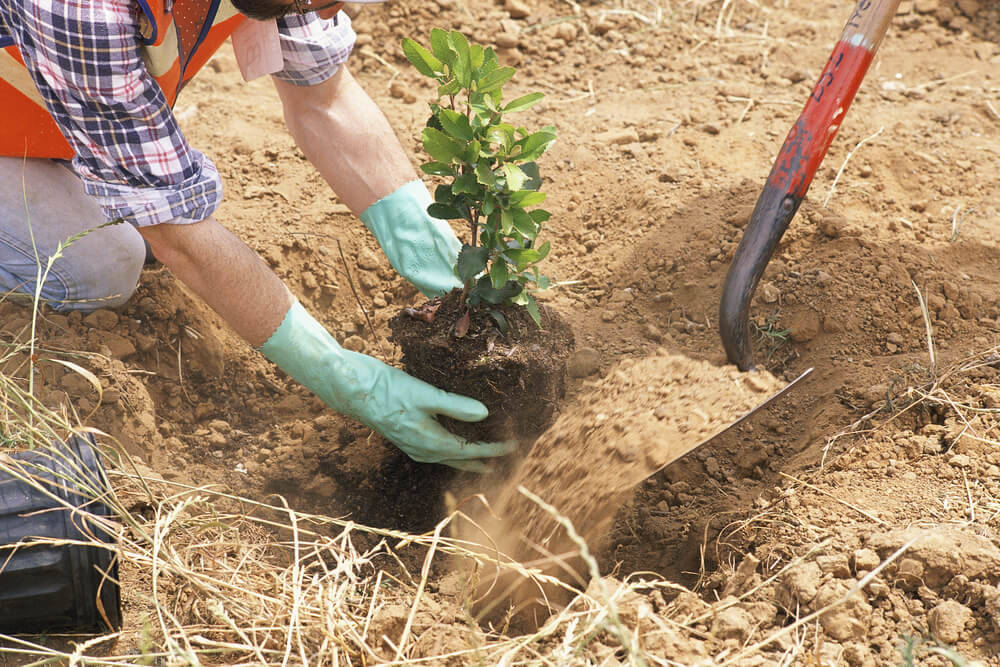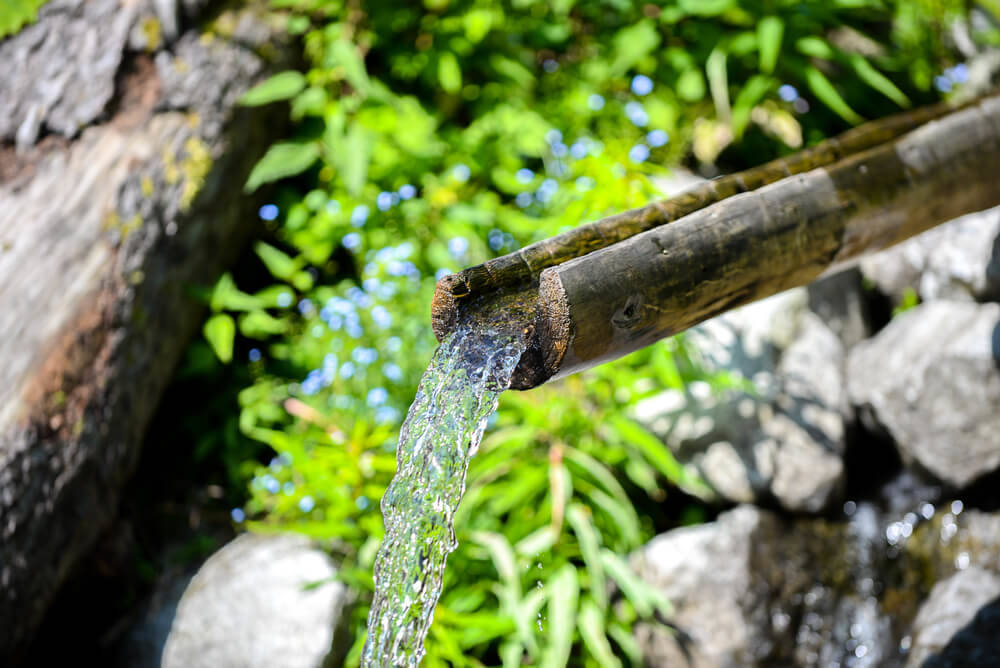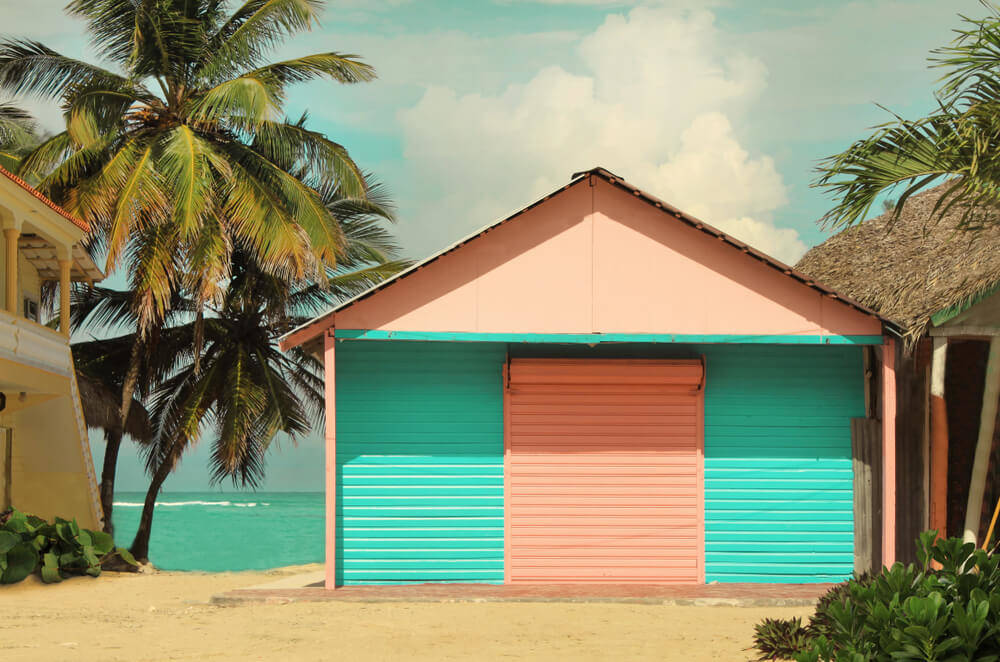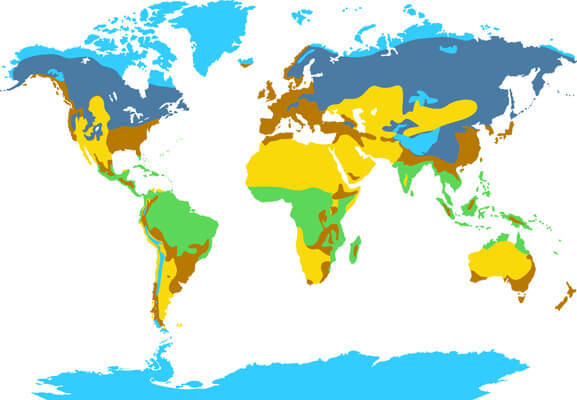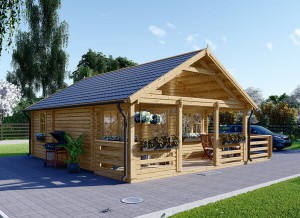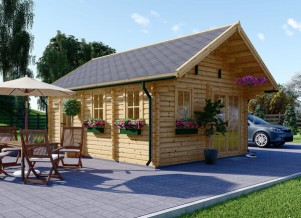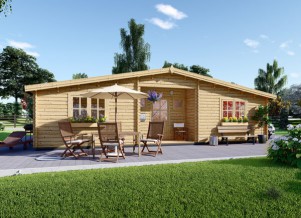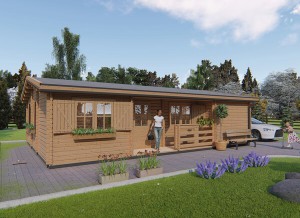How do I plant trees near my log cabin? It is a question that has a somewhat obvious answer to most people. They would advise you to simply dig up the right amount of dirt and plop down the tree. While that covers the basics, there is a lot more than meets the eye.
In order to successfully install this kind of landscaping, there are two things every gardener should know: where to plant a tree and what kind of tree to plant. That doesn’t even include the special considerations that takes into account! If it sounds complicated, don’t sweat it. In this article, you will learn how to plant trees near your log cabin.
Location, Location, Location
The very first thing to take into account is your tree’s future location. Turns out, you shouldn’t just choose a spot and start digging. In fact, you can help insure your plant’s survival if you follow a few guidelines.
- Inspection – Take a look around your log cabin’s lawn. You are trying to find a spot that receives a good amount of sun. Also important is exposure to rain without exposure to flooding. Log cabin owners with large yards should draw a sketch and mark the best locations.
- Soil Health – Soil texture, pH, and drainage are all important to check. To figure out the pH, you can purchase a test. The texture influences how well water drains, and determines what types of trees can grow in your yard. If you want to improve drainage you will have to grade the ground.
- Soil Depth – How far below ground level is the bedrock? The deeper down it is, the better for the tree roots. Most log cabin gardeners find 6 feet to be a good depth for most trees. Remember, shallow root systems don’t do much to hold top heavy trees in a storm.
- Figure out root size – If you have an idea of the type of tree you want to plant, find out how far the roots spread. Then, measure that area around your best spots. You want to avoid planting too close to foundations, sidewalks, and underground pipes.
- Strategic planting – Trees can be planted around your log cabin in places that benefit you. They work well as a natural sound barrier when planted in a row against the area where the noise originates. This is awesome if your log cabin is near a busy road.
You can also plant your trees in order to reduce energy consumption. Therefore, lowering the cost of heating and air conditioning. All you need is space for 3 large trees (or space for 3 small trees to grow into). Plant 1 on the north, east, and west of your log cabin for protection from the sun and wind.
- Contact the utility companies – Even if you think you live in a relatively undeveloped area, you can never be too safe. It isn’t worth getting injured or damaging your log cabin’s utilities. The water, gas, and power companies will be able to check your yard for you.
- Buildings – If you plan on planting a tree underneath a building, you may want to reconsider. Gutters and eaves make it hard for the flora to get rainwater. However, don’t put anything under cascading water.
Picking a Tree
When choosing a tree, there are a few different factors you need to think about. However, the most important is the canopy size of your desired tree. This is going to be extremely important in deciding the ultimate log cabin yard location. The following are 5 reasons the canopy size is key.
1. Overhead Power Lines -When doing your inspection, be aware of overhead power lines. As a general rule, no tree should ever be planted within 6 feet of a line. However, it is important to think about canopy size when selecting the best locations.
2. Existing Plants – If you have any plants that are young, consider how the canopy of your new tree will affect their growth. This goes double for youthful shrubs and trees. The addition of shade could kill them! It’s best to choose plants for under the tree after the fact.
- Coastal Log Cabins – Living on the coast can bring its own set of considerations. The most important of which is salt. If you live within a mile of the ocean, take the tree’s salt tolerance into account. Right on the dunes requires a high level of tolerance. The further you are from the source, the less resistant the plants need to be.
Leaves, branches, and roots can all be affected by sodium chloride. So can soil. In fact, living near the coast increases the chance that even your irrigation water could include sodium chloride. That is why it is so important to read up on salt sensitivity before you make any final decisions.
4. Wind-Resistance – Wind is another condition well known to those living on the sea. However, wind can be a huge factor no matter where you live. The more wind, the more water the tree loses. If you live in a climate with sandy soil, be aware this also depletes H20.
In rural areas, you should be fine if you upgrade your irrigation system. Those in urban areas may need to try something different. Drought tolerant trees will do the best in windy conditions where you can’t manage your own irrigation system.
5. Climate Zone – When choosing a tree or plant, always know what climate zone you are in. The measurement comes from an area’s average hottest and coldest temperatures. This information will tell you if your chosen flora will survive where your log cabin is located.
Grow a Healthy Log Cabin Tree in No Time!
Choosing the correct location and perfect plant are extremely important. So important, each of the factors has 5 or more considerations. If you want to know how to plant trees near your log cabin, pick a good plant and a great location!


